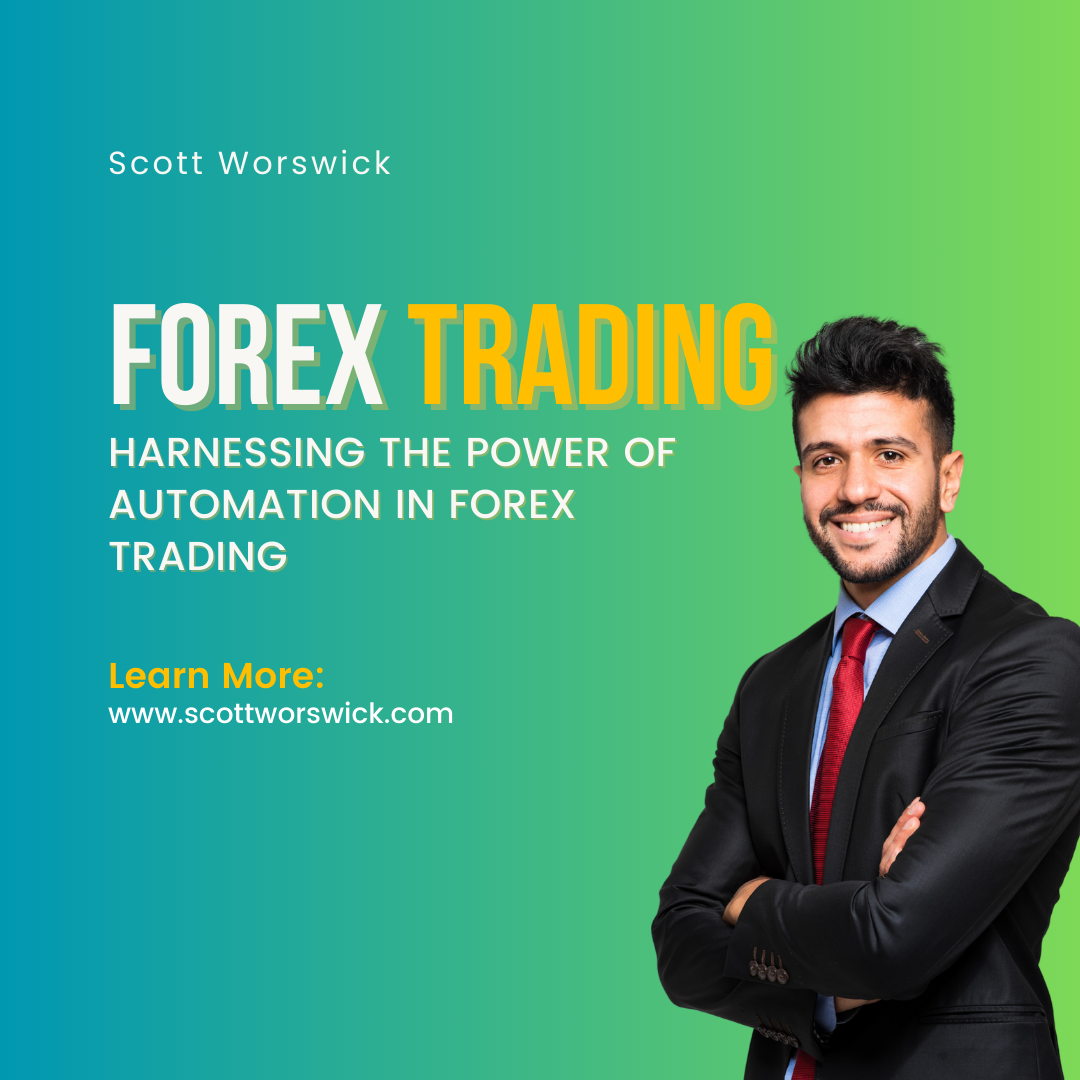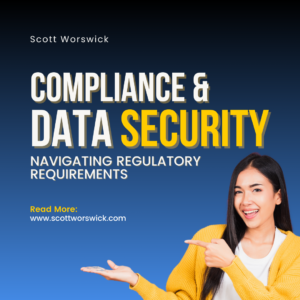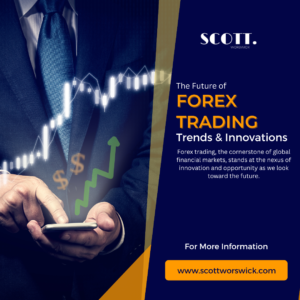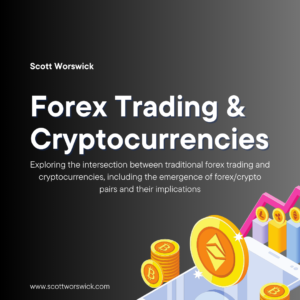Forex trading, the practice of exchanging currencies on a global market, has long captivated traders with its potential for substantial profits and its dynamic, 24-hour nature. The sheer volume and liquidity of the forex market, with daily transactions surpassing $6 trillion, create a landscape rich with opportunities. However, the complexity and volatility of this market can be daunting, especially for novice traders. The advent of automation in forex trading has revolutionized this field, providing tools and systems that streamline trading processes and enhance efficiency, ultimately making the market more accessible and potentially more profitable for a broader range of participants.
Automation in forex trading leverages sophisticated algorithms and advanced technology to analyze market conditions, execute trades, and manage portfolios without the need for constant human intervention. This transformation allows traders to capitalize on market opportunities with unprecedented speed and accuracy. Automated trading systems, also known as trading robots or expert advisors (EAs), can process vast amounts of data, identify patterns, and execute trades based on predefined strategies, all in real-time. This eliminates the emotional biases that often impair decision-making in manual trading and ensures a level of consistency and precision that human traders simply cannot match.
The benefits of automation in forex trading extend beyond mere efficiency. By operating continuously, automated systems can monitor the market 24/7, seizing trading opportunities as they arise, regardless of the time of day. This capability is particularly advantageous in the forex market, where currency values can fluctuate rapidly due to global events and economic indicators. Additionally, automated systems enable backtesting of trading strategies using historical data, allowing traders to refine and optimize their approaches before committing real capital. As a result, automation not only enhances the potential for profitability but also provides a more structured and disciplined approach to navigating the complexities of forex trading.
Table of Contents
Introduction to Forex Trading
Forex trading, also known as foreign exchange trading, is the process of buying and selling currencies on the global market. It is the largest and most liquid financial market in the world, with daily trading volumes exceeding $6 trillion. Unlike other financial markets, forex trading operates 24 hours a day, five days a week, allowing traders to engage in transactions across different time zones. The primary objective of forex trading is to profit from the fluctuations in currency exchange rates, which are influenced by various factors such as economic indicators, geopolitical events, and market sentiment.
The allure of forex trading lies in its potential for significant returns and the opportunity to leverage relatively small amounts of capital for larger market positions. This high leverage, however, also comes with increased risk, making it essential for traders to have a solid understanding of market dynamics and effective risk management strategies. Forex trading involves a diverse array of participants, from individual retail traders to large financial institutions, all interacting within a decentralized marketplace. This diversity contributes to the market’s liquidity and volatility, offering both challenges and opportunities for traders.
Given the complexities and rapid pace of forex trading, many traders are turning to automation to enhance their trading strategies. Automated trading systems, or trading robots, are designed to analyze market conditions, execute trades, and manage positions with minimal human intervention. These systems can process vast amounts of data quickly, identify trading opportunities, and execute trades with precision. By removing the emotional and psychological factors that often lead to poor decision-making, automation helps traders maintain consistency and discipline. This technological advancement is transforming the landscape of forex trading, making it more accessible and efficient for traders of all levels.
The Evolution of Automation in Forex Trading
Automation in forex trading has undergone a significant evolution, reshaping how traders interact with the market. The journey began with basic tools that provided trading signals and alerts based on simple technical indicators. These early systems offered traders a way to stay informed about potential market movements without the need for constant monitoring. However, they still required manual intervention to execute trades, limiting their effectiveness in capturing rapid market changes. As technology advanced, so did the sophistication of these tools, leading to the development of fully automated trading systems capable of executing trades autonomously.
The introduction of expert advisors (EAs) marked a pivotal moment in the evolution of automation in forex trading. EAs are sophisticated software programs that use predefined criteria to analyze market data and execute trades. These programs can be customized to implement various trading strategies, from simple moving average crossovers to complex algorithmic models. The ability to backtest these strategies on historical data allows traders to optimize their systems before deploying them in live trading. This level of customization and optimization has made EAs a popular choice among traders seeking to enhance their performance and reduce manual effort.
With the advent of artificial intelligence (AI) and machine learning (ML), the capabilities of automated trading systems have reached new heights. AI-driven systems can analyze vast amounts of data in real-time, identifying patterns and trends that may not be immediately apparent to human traders. These systems can adapt to changing market conditions, continually improving their performance based on new data. The integration of AI and ML in forex trading has not only increased the accuracy and efficiency of automated systems but has also opened up new possibilities for predictive analysis and strategy development.
Despite the advancements, the evolution of automation in forex trading has also brought new challenges. The reliance on technology means that traders must contend with the risks of technical failures and cybersecurity threats. Ensuring the robustness and reliability of automated systems is crucial to prevent costly errors. Moreover, while automation can significantly enhance trading performance, it is not a substitute for sound trading knowledge and risk management practices. Traders must understand the underlying principles of forex trading and remain vigilant in monitoring their automated systems to ensure they continue to operate as intended.
The evolution of automation in forex trading has transformed the landscape, offering traders unprecedented tools to navigate the complexities of the market. From basic signal generators to advanced AI-driven systems, automation has made forex trading more accessible, efficient, and potentially more profitable. However, the successful integration of these technologies requires a balance between leveraging automation’s capabilities and maintaining a solid foundation of trading knowledge and oversight.
How Automated Trading Systems Work
Automated trading systems in forex trading are designed to streamline and optimize the trading process by leveraging advanced algorithms and technology. These systems operate based on predefined criteria and rules set by the trader, which can include technical indicators, price patterns, and other market signals. The core function of these systems is to continuously analyze market data in real-time, identify potential trading opportunities, and execute trades automatically. This continuous monitoring and analysis allow automated systems to react to market changes faster than human traders, ensuring timely execution of trades to capitalize on fleeting opportunities.
The functionality of automated trading systems is rooted in their ability to backtest trading strategies using historical market data. Backtesting is a crucial component that allows traders to evaluate the performance of their strategies before applying them to live trading. By simulating trades based on past data, traders can identify the strengths and weaknesses of their strategies, make necessary adjustments, and optimize parameters for better performance. This process helps in fine-tuning the strategy to enhance its profitability while minimizing risks. Additionally, automated systems can incorporate risk management tools such as stop-loss and take-profit orders to protect the trader’s capital and manage exposure effectively.
Another significant advantage of automated trading systems is their capacity to eliminate human emotions from the trading equation. Emotions like fear and greed can often lead to irrational decision-making and inconsistent trading behavior. Automated systems adhere strictly to the predefined trading rules, ensuring disciplined and systematic trading. This consistency helps in maintaining a steady performance even during volatile market conditions. Furthermore, these systems can operate 24/7, allowing traders to take advantage of global market movements at any time, regardless of their availability. By harnessing the power of automation, forex trading becomes more efficient, accurate, and potentially more profitable, providing traders with a significant edge in the competitive financial markets.
Advantages of Automation in Forex Trading
1. Enhanced Efficiency and Speed
Enhanced efficiency and speed are two of the most significant advantages that automation brings to forex trading. Automated trading systems can process and analyze vast amounts of market data at speeds far beyond human capability. This rapid data processing enables the identification of trading opportunities in real-time, ensuring that trades are executed at the optimal moment. In the highly dynamic forex market, where currency values can shift in milliseconds, the ability to act swiftly can make the difference between a profitable trade and a missed opportunity. Automation thus provides traders with the necessary speed to capitalize on favorable market conditions instantly.
Moreover, automated trading systems operate with a level of precision and consistency that is difficult for human traders to achieve. These systems follow predefined rules and strategies without deviation, ensuring that trades are executed exactly as planned. This eliminates the risk of human errors, such as mistyping an order or hesitating at a critical moment. The consistency offered by automated systems is particularly beneficial in managing high-frequency trading strategies, where numerous trades are executed in quick succession to exploit small price movements. By maintaining strict adherence to trading algorithms, automated systems ensure that each trade is executed flawlessly, enhancing overall trading efficiency.
The continuous operation of automated trading systems further boosts efficiency in forex trading. Unlike human traders, who require breaks and cannot monitor the markets around the clock, automated systems can operate 24/7. This constant vigilance allows traders to take advantage of market movements across different time zones and during off-hours, ensuring that no profitable opportunities are missed. Additionally, automated systems can manage multiple currency pairs and trading strategies simultaneously, something that would be extremely challenging for an individual trader to accomplish. By streamlining and automating these processes, traders can maximize their productivity and achieve better results in the competitive forex market.
2. Elimination of Human Emotions
One of the most profound benefits of automation in forex trading is the elimination of human emotions, which often undermine trading performance. Emotions such as fear, greed, and overconfidence can lead to irrational decision-making, resulting in poor trading outcomes. For instance, fear might cause a trader to close a position prematurely, while greed could tempt them to over-leverage and risk more than they can afford to lose. By automating the trading process, these emotional biases are removed, allowing for a more disciplined and objective approach to trading. Automated systems follow predefined rules and strategies strictly, ensuring that each trade is executed based on logic and data rather than emotional impulses.
Automated trading systems ensure consistency in executing trading strategies, which is crucial in the volatile forex market. Human traders might deviate from their plans due to emotional stress or overconfidence, especially after experiencing a series of losses or gains. Such deviations can disrupt the effectiveness of even the most well-thought-out strategies. In contrast, automated systems stick to the set parameters without exception, maintaining the integrity of the trading strategy regardless of market conditions. This consistency helps in achieving steady long-term results, as the system is not swayed by the psychological highs and lows that typically affect human traders.
The removal of emotions from the trading equation also enhances risk management in forex trading. Automated systems can incorporate sophisticated risk management tools, such as stop-loss and take-profit orders, ensuring that each trade adheres to predefined risk parameters. This systematic approach prevents the emotional decision-making that often leads to excessive risk-taking or panic selling. Additionally, automated systems can continuously monitor multiple positions and market conditions simultaneously, adjusting strategies as needed to mitigate risks effectively. By providing a disciplined and unemotional framework for trading, automation helps traders maintain a balanced and controlled approach, ultimately leading to more consistent and reliable trading outcomes.
3. Continuous Market Monitoring
Continuous market monitoring is a significant advantage offered by automated systems in forex trading. Unlike human traders who require rest and cannot be actively engaged with the market at all times, automated trading systems can operate around the clock. This 24/7 monitoring capability ensures that no market movements go unnoticed, allowing traders to capitalize on opportunities that arise at any hour. Given the global nature of the forex market, which spans multiple time zones and operates continuously from Monday to Friday, this perpetual vigilance is crucial. Automated systems can instantly respond to news events, economic data releases, and other market-moving factors, executing trades with the speed and precision necessary to maximize profits.
The ability to continuously monitor the market also means that automated trading systems can manage multiple positions and currency pairs simultaneously. This is particularly beneficial in the fast-paced environment of forex trading, where the ability to juggle several trades at once can significantly enhance a trader’s portfolio performance. Automated systems can track various indicators, price movements, and technical patterns across different currency pairs, ensuring that each position is managed according to the trader’s predefined strategy. This multi-tasking capability not only increases efficiency but also allows for a more diversified trading approach, reducing the reliance on a single market or strategy.
Moreover, continuous market monitoring facilitated by automation enhances risk management and position control in forex trading. Automated systems can be programmed to implement risk management strategies such as trailing stops, stop-loss orders, and take-profit targets in real-time. This ensures that risk parameters are adhered to consistently, without the need for manual intervention. Automated systems can quickly adjust to changing market conditions, closing positions or adjusting stops to protect the trader’s capital. This proactive risk management helps to mitigate potential losses and lock in profits, providing traders with a more secure and controlled trading environment. By harnessing the power of continuous market monitoring, traders can stay ahead of market developments and maintain a competitive edge in the dynamic world of forex trading.
4. Consistent Execution
Consistent execution is a cornerstone of successful forex trading, and automation plays a crucial role in achieving this consistency. Automated trading systems are designed to execute trades based on predefined criteria without deviation. This eliminates the human errors and delays that can occur with manual trading, ensuring that every trade is executed precisely as planned. Whether it’s adhering to entry and exit points, setting stop-loss levels, or adjusting positions in response to market conditions, automated systems maintain a high level of accuracy and consistency. This precise execution is essential in the fast-paced forex market, where timing and exact order placement can significantly impact profitability.
The advantage of consistent execution extends to the ability to manage trades under varying market conditions. Human traders may struggle to remain consistent, especially during periods of high volatility or emotional stress. Fear and greed can lead to impulsive decisions, such as closing a position too early or letting losses run. Automated systems, however, are not influenced by emotions and stick to the set rules, regardless of market fluctuations. This disciplined approach helps in maintaining the integrity of the trading strategy over the long term. By ensuring that trades are executed in a consistent manner, automated systems enhance the overall reliability and predictability of trading outcomes.
Furthermore, consistent execution facilitated by automation contributes to more effective risk management in forex trading. Automated systems can implement complex risk management strategies with precision, consistently applying stop-loss and take-profit orders as defined by the trading plan. This reduces the risk of significant losses and helps to lock in profits methodically. Additionally, automated systems can adapt to market changes swiftly, rebalancing portfolios or adjusting trading parameters to manage risk effectively. This level of consistency and precision in execution provides traders with greater confidence in their strategies, knowing that the automated system will faithfully carry out their trading plan without deviation. By harnessing the power of consistent execution, traders can achieve more stable and predictable results in the dynamic and often unpredictable forex market.
Challenges and Considerations
While the benefits of automation in forex trading are substantial, traders must also navigate a series of challenges and considerations to leverage these technologies effectively. One of the primary concerns is the potential for technical failures. Automated trading systems rely heavily on stable internet connections and robust server infrastructure. Any disruption, such as a power outage or internet downtime, can lead to missed trading opportunities or unintended trades. To mitigate these risks, traders often use Virtual Private Servers (VPS) to ensure that their automated systems run continuously and without interruption, even if their personal devices are offline.
Another significant challenge is the risk of over-optimization, commonly known as curve-fitting. Over-optimization occurs when a trading strategy is excessively tailored to historical data, showing excellent past performance but failing in live markets due to changing conditions. This can give traders a false sense of security about the effectiveness of their strategies. To avoid this pitfall, it is crucial to implement robust backtesting and forward-testing procedures. These practices help verify that the strategy is not just tailored to past market conditions but is also adaptable to future market dynamics. A well-balanced approach includes testing the strategy across different time periods and market scenarios to ensure its robustness.
Additionally, traders must be wary of the complexities involved in programming and maintaining automated trading systems. Creating an effective trading algorithm requires not only a deep understanding of forex trading principles but also proficiency in programming and quantitative analysis. Even when using pre-built systems or expert advisors, there is a need for continuous monitoring and updates to adapt to evolving market conditions. This can be a daunting task for traders who may not have a technical background. As such, partnering with knowledgeable developers or using reputable, well-supported trading platforms can help mitigate these challenges.
Lastly, the regulatory environment poses another layer of consideration. Forex trading is subject to various regulations depending on the trader’s location and the brokers they use. Automated trading systems must comply with these regulations, which can include restrictions on leverage, mandatory reporting, and other compliance requirements. Traders must ensure that their automated systems are set up to operate within these legal frameworks to avoid potential fines and penalties. This often involves staying updated on regulatory changes and working with brokers who are compliant with the relevant laws. By addressing these challenges and considerations, traders can better harness the power of automation in forex trading, optimizing their strategies for consistent and profitable performance.
Choosing the Right Automated Trading System
Choosing the right automated trading system is paramount for success in forex trading. With a myriad of options available, traders must carefully evaluate various factors to ensure they select a system that aligns with their trading goals and preferences. One crucial consideration is the system’s performance track record. Traders should seek systems with a proven history of generating consistent returns over a significant period. This can be verified through independent reviews, backtesting results, and real-time performance data. Additionally, it’s essential to assess the transparency and reliability of the system provider, ensuring that they provide accurate and up-to-date information on their trading strategies and performance.
Another critical factor to consider when choosing an automated trading system is the underlying trading strategy. Traders should evaluate whether the strategy is suitable for their risk tolerance, trading style, and market conditions. Some systems may focus on high-frequency trading, while others may employ trend-following or mean-reversion strategies. Understanding the logic behind the strategy and its historical performance in different market environments is essential for making an informed decision. Additionally, traders should assess the system’s risk management features, such as stop-loss and take-profit orders, to ensure that their capital is adequately protected.
Ease of use and accessibility are also essential considerations when selecting an automated trading system. Traders should opt for systems that offer intuitive interfaces and robust technical support to facilitate smooth operation. Additionally, compatibility with trading platforms and brokers is crucial to ensure seamless integration into the trader’s existing workflow. Demo accounts can be valuable for testing the functionality and usability of the system before committing real capital. By carefully evaluating these factors and selecting a reputable and well-suited automated trading system, traders can harness the power of automation to optimize their forex trading strategies and achieve their financial goals.
Conclusion
The advent of automation has revolutionized the landscape of forex trading, offering traders unprecedented tools to navigate the complexities of the market. By harnessing the power of automation, traders can streamline their trading processes, enhance efficiency, and potentially increase profitability. Automated trading systems enable continuous market monitoring, ensuring that no trading opportunities go unnoticed, and positions are managed effectively around the clock. Moreover, automation eliminates human emotions from the trading equation, providing a disciplined and systematic approach that helps traders maintain consistency and avoid costly errors.
However, while automation brings numerous benefits, traders must also be mindful of the challenges and considerations involved. Technical failures, over-optimization, and regulatory compliance are just a few of the factors that traders must navigate when deploying automated trading systems. Additionally, selecting the right automated trading system requires careful evaluation of performance track records, underlying trading strategies, and ease of use. By addressing these challenges and considerations, traders can optimize their use of automation in forex trading and maximize their chances of success.
In essence, automation offers traders a powerful tool to level the playing field in the competitive world of forex trading. By combining advanced technology with sound trading principles, traders can leverage automation to execute trades with speed, precision, and consistency. While automation is not a panacea for all trading woes, when used wisely, it can significantly enhance the efficiency and effectiveness of forex trading strategies. As technology continues to evolve, the role of automation in forex trading is likely to expand, offering traders even greater opportunities to succeed in this dynamic and ever-changing market.







Pingback: Forex Trading and Its Potential to Generate Passive Income -